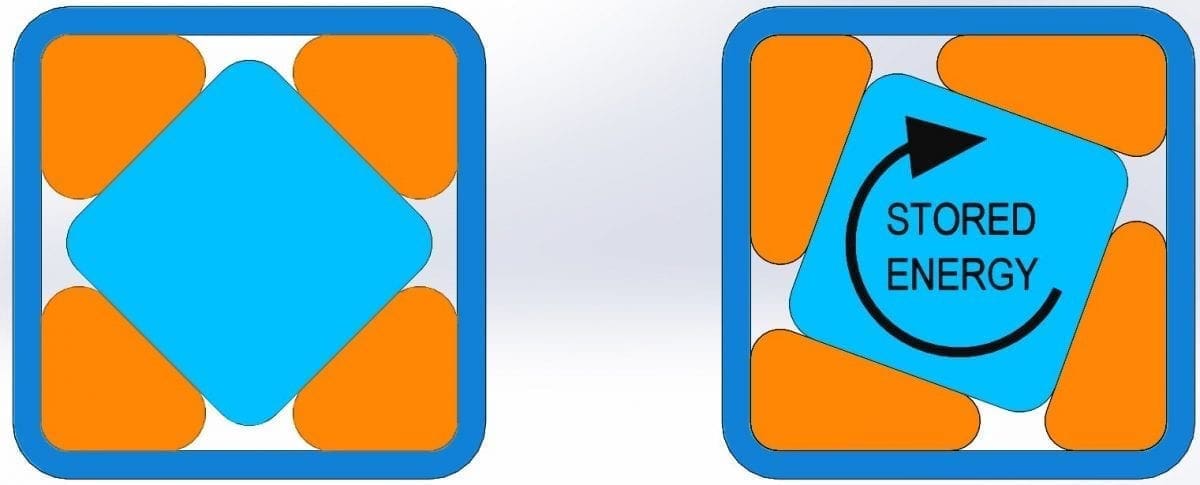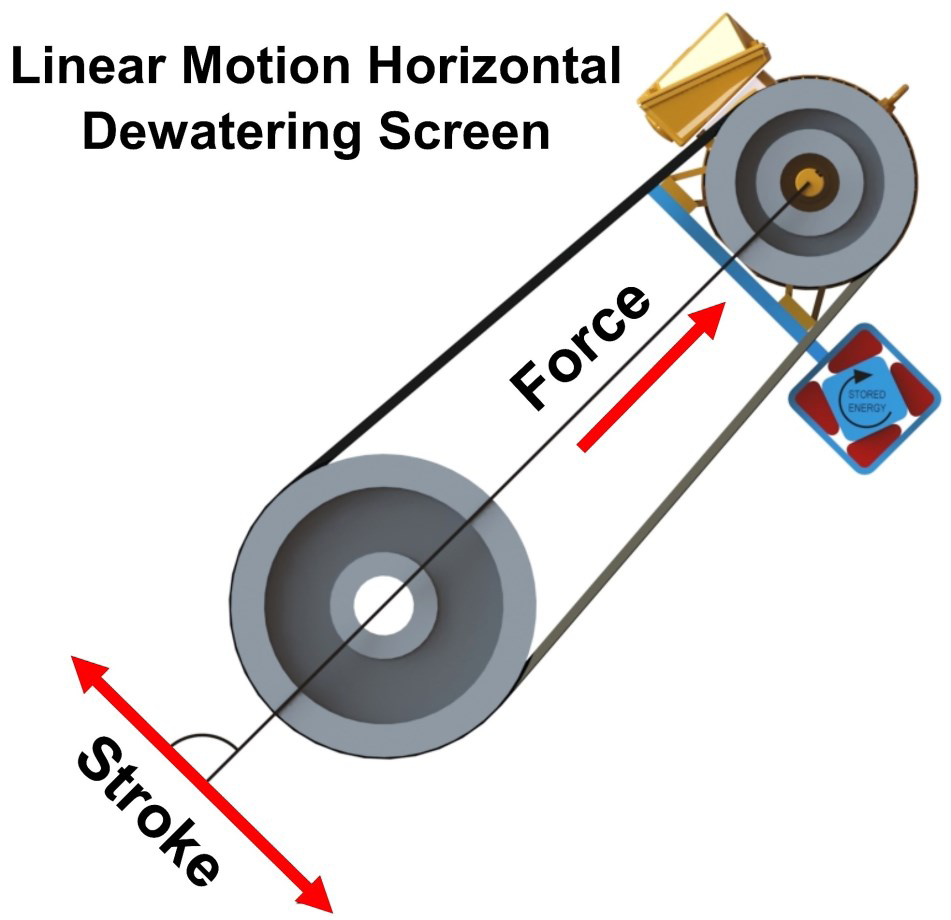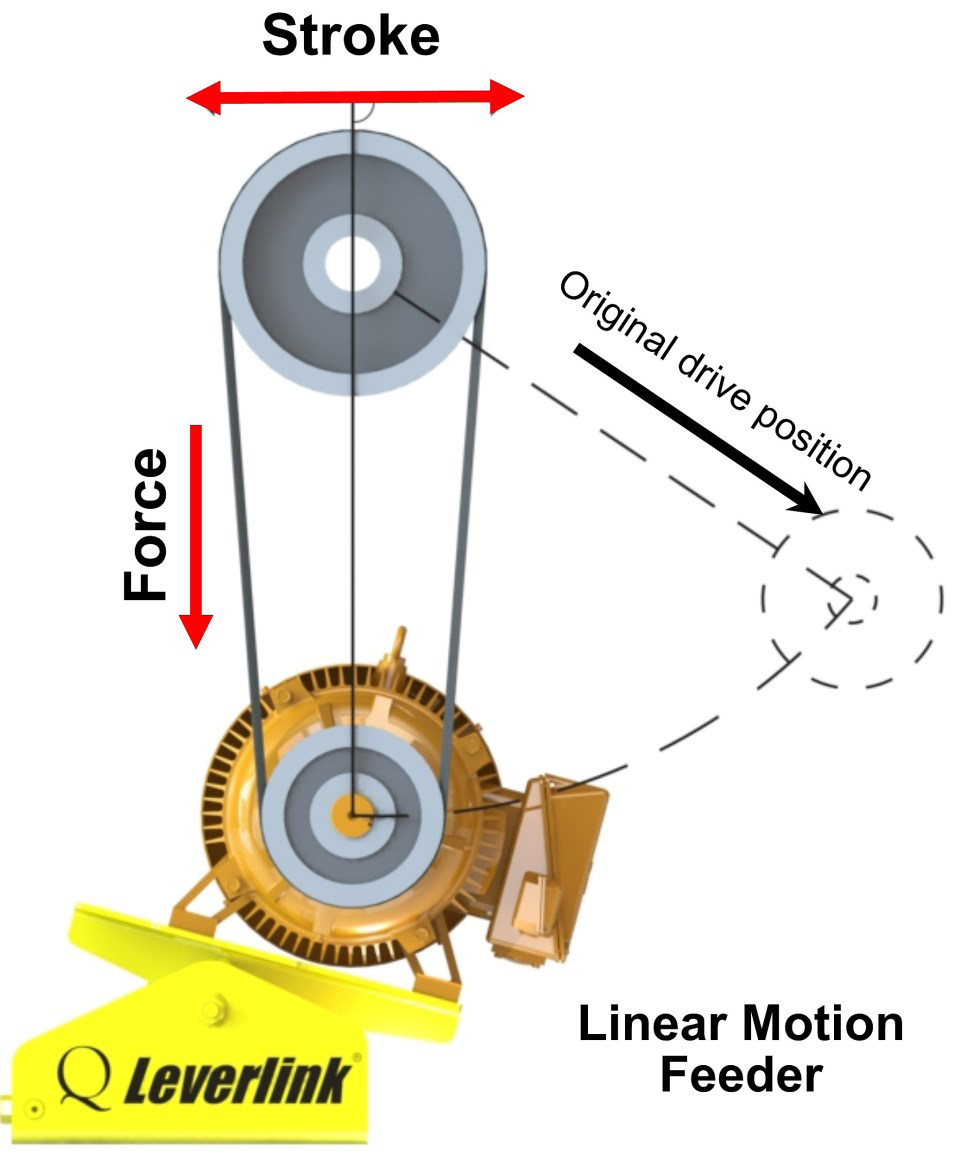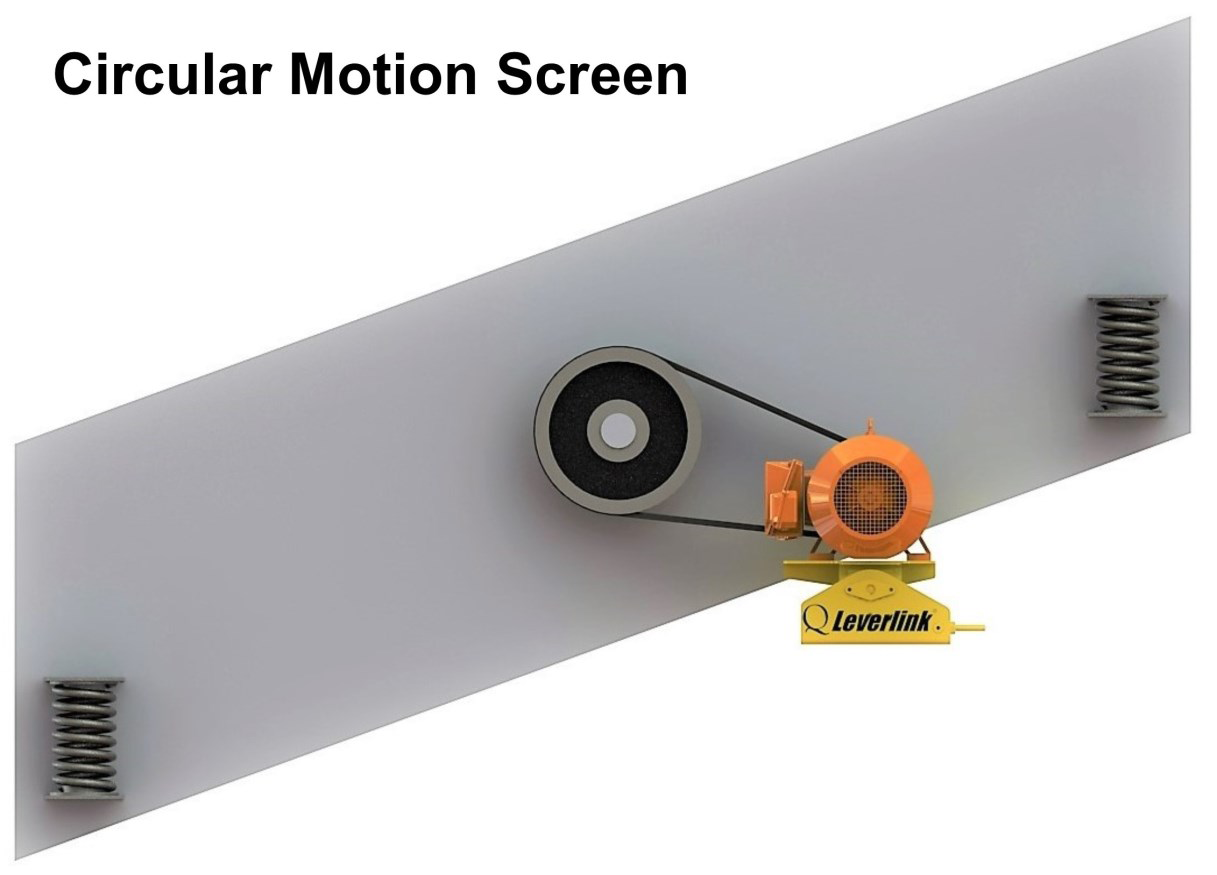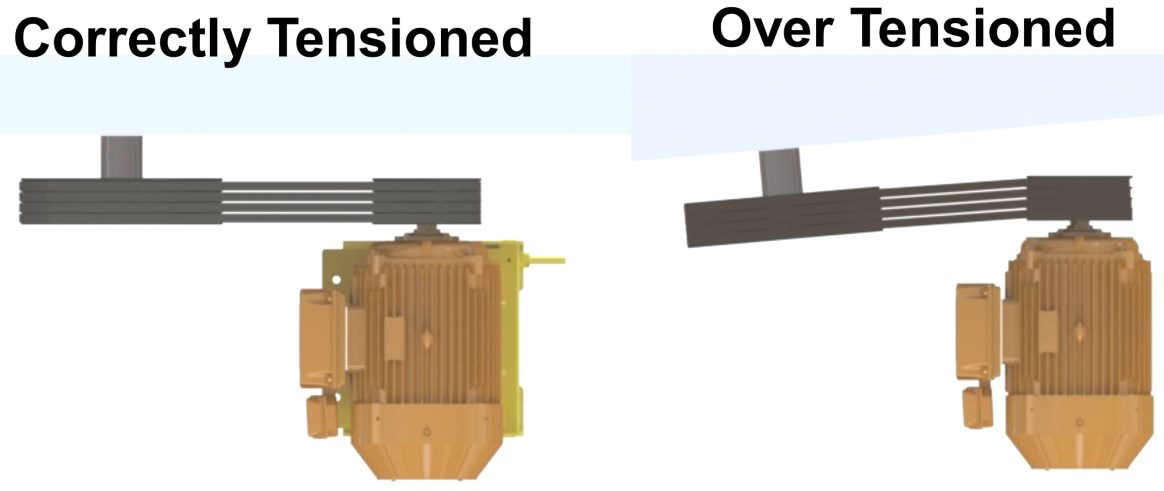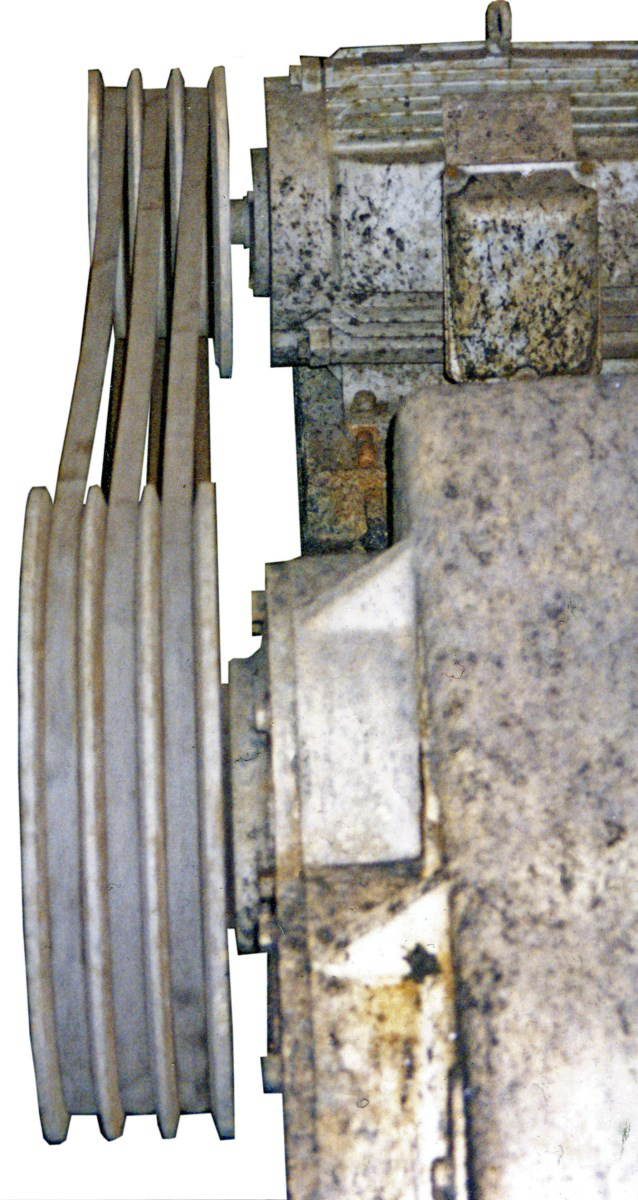By Richard Sharp, Managing Director
Almost thirty years ago, I designed the first stored energy motorbases for vibrating screens. These were simplistic in design using rubber torsion springs which were well known as wheel suspension in caravans and trailers for many years previously. Having used and built many motor bases over the years such as tilt bases, slide bases and other configurations of the same in quarries and extractive industry operations.
In times past inclined screens dominated the quarry industry. Today we see a range of new generation screening machines such as horizontal/variable slope, banana screens etc. Many new types of screens are driven via lay or jack shafts. In this article I only intend to focus on those screens and or feeders directly connected from the screen to the electric motor by the vee belts. These will be referred to as dynamic applications.
Case Study 1.
INTRODUCTION:
More than 25 years ago when visiting a mining operation, the manager showed me a problem he was experiencing with breaking the motor shafts on his linear action screens. These were 30kW, D200L 4 pole motors. The motors were fitted with 6 groove, B section belts. They were driving 2400 x 4800 horizontal dewatering screens. The motor was adjusted with slide rails. Breaking of motor shafts occurred during resonance (stopping or starting) when a significant percentage of the mass of the screen was transferred to the electric motor shaft.
SOLUTION:
To resolve the problem, I designed a simplistic stored energy motor base consisting of a rubber torsion spring to which a flat plate was welded to carry the electric motor. The spring was prepositioned to provide sufficient force to tension six vee belts. There was enough resilience left to allow the electric motor to follow the wild movement of the screen during resonance. No more motor shafts were broken. The client went on to fit up another 28 screens.
Case study 2.
INTRODUCTION:
A quarry maintenance supervisor contacted us about ongoing problems with a 55kW, D280S, 6 pole motor fitted to a linear motion feeder drive. A site visit and a check of the stroke angle revealed the vee belt drive angle was incorrect and that it resulted in energy from the feeder being transmitted via the vee belts into the supporting structure. This resulted in cracking of steelwork and welds and an ongoing maintenance problem.
SOLUTION:
To correct the problem we relocated the drive position 90 degrees to stroke or line of action and fitted a stored energy motor base. The mounting position was vertical down. In this position the mass of the electric motor assists in tensioning the vee belts. The driven pulley now pivots around the drive pulley centre line and minimises the transmission of energy to the supporting structure.

